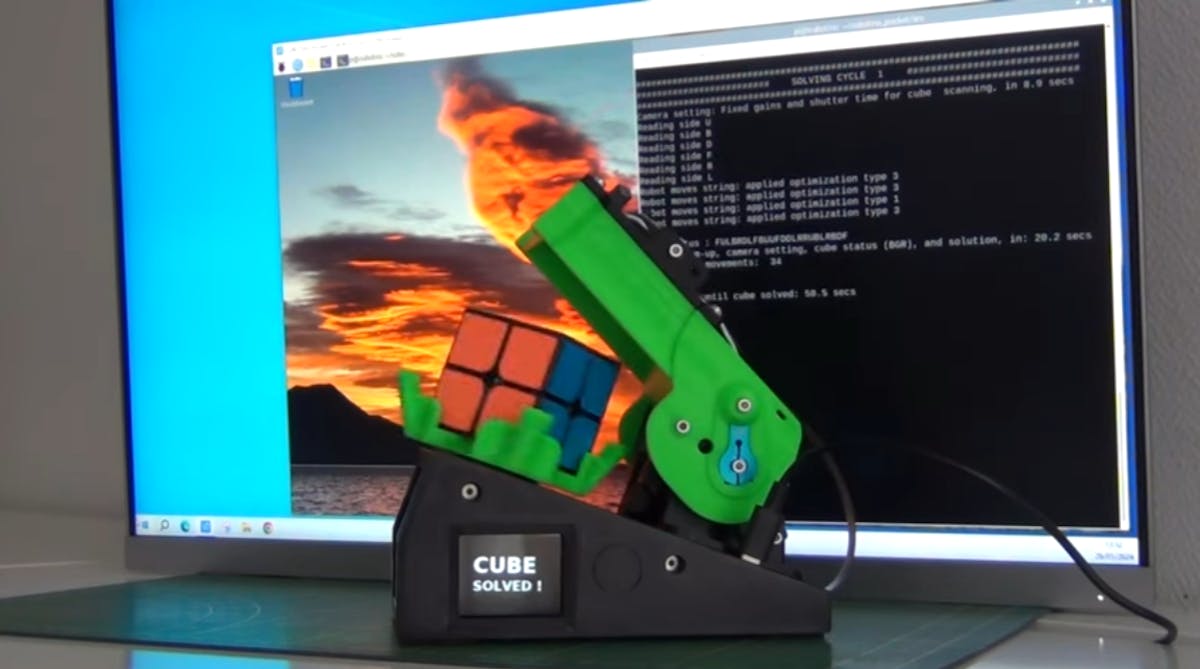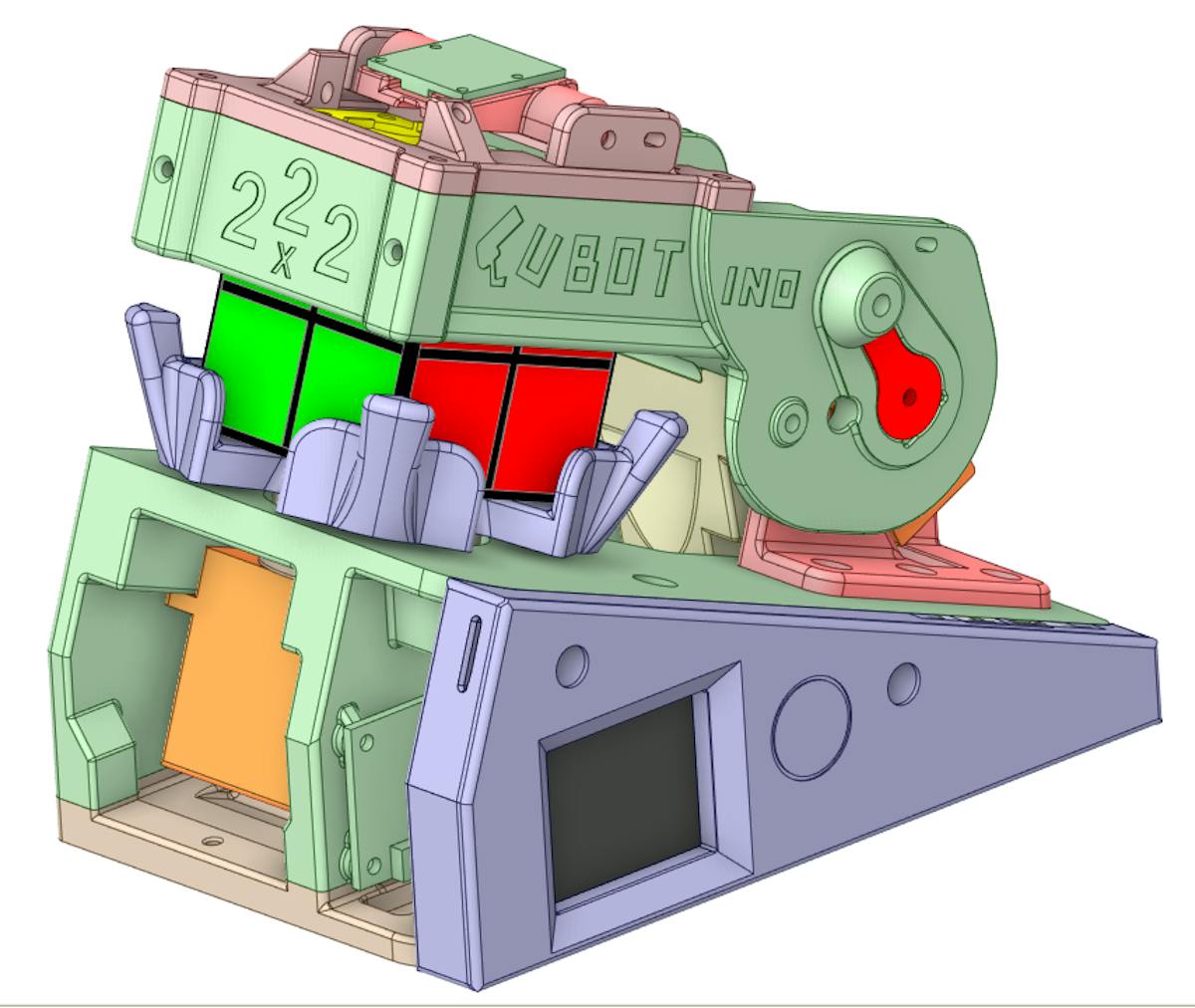CUBOTino Pocket Can Solve 2×2×2 Rubik’s Cubes in Less Than a Minute
AndreaFavero’s 3D-printed CUBOTino Pocket robot can solve a 2×2×2 Rubik’s Cube in less than a minute with the fewest moves.

The standard Rubik’s Cube is a 3×3×3 grid, but that’s just the beginning. Similar puzzles come in all shapes and sizes, including polygons with much higher face counts than six and even some with irregular face shapes. They tend to get harder as they become more complex, to the point where some are almost impossible to solve. But you can also go the other direction and get a 2×2×2 Rubik’s Cube that’s easy to solve. If, however, you’re still struggling with that, AndreaFavero’s CUBOTino Pocket robot can solve the 2×2×2 Rubik’s Cube for you in less than a minute.
There are lots of Rubik’s Cube-solving machines out there, including AndreaFavero’s original CUBOTino that could solve standard 3×3×3 cubes. But we haven’t seen any designed for 2×2×2 cubes. The CUBOTino Pocket solves those in under a minute. AndreaFavero makes it clear that speed wasn’t the goal with this design and that, instead, it should find the most optimal solution to complete the puzzle in as few moves as possible. We think both the speed and the move optimization are very impressive.

Like its big brother, the CUBOTino Pocket works using only two servo motors thanks to a clever operating procedure. One servo rotates the entire cube around the vertical Z axis, while the other servo performs two different functions: holding the top row in place and flipping the cube 90 degrees. When the servo moves in one direction, a lid-like apparatus holds the top row. When the servo moves the other direction, a small protrusion flips the cube. With just those two degrees of freedom, the CUBOTino Pocket can manipulate a 2×2×2 Rubik’s Cube in whatever way it needs to.
Those mechanisms — and every part aside from fasteners and electronic components — are 3D-printed so anyone can build a CUBOTino Pocket at home. A Raspberry Pi Zero W 2 single-board computer controls the entire solution process. It runs a custom script to analyze the current block positions through a Raspberry Pi Camera module and then works out possible solutions. Once it finds the solution that requires the fewest moves, it begins actuating the motors to follow those steps. A small optional 1.77” TFT display shows the progress along the way.
This robot is really satisfying to see in action and the CUBOTino Pocket would be a perfect project for kids and young adults interesting in STEM.
Writer for Hackster News. Proud husband and dog dad. Maker and serial hobbyist. Check out my YouTube channel: Serial Hobbyism


